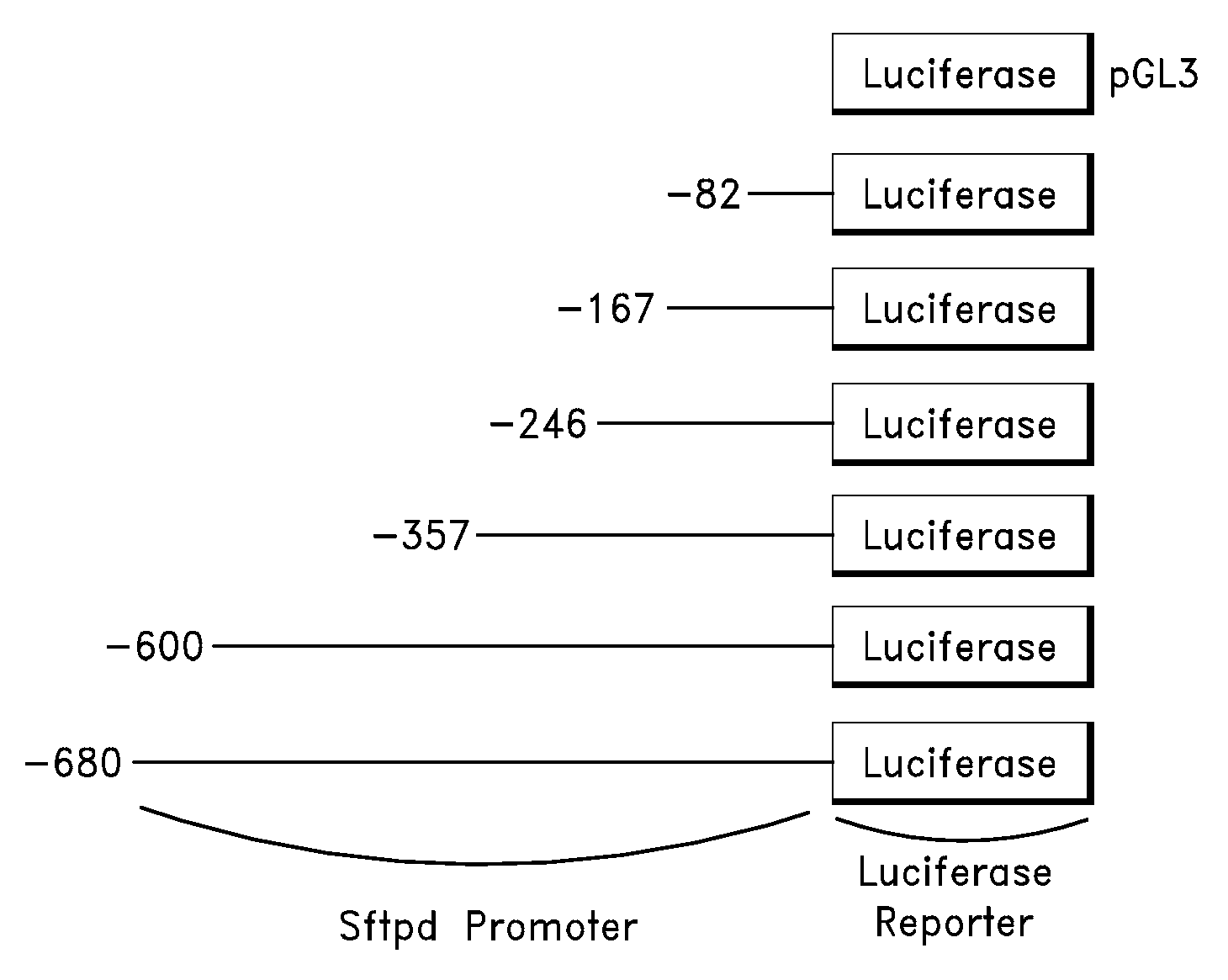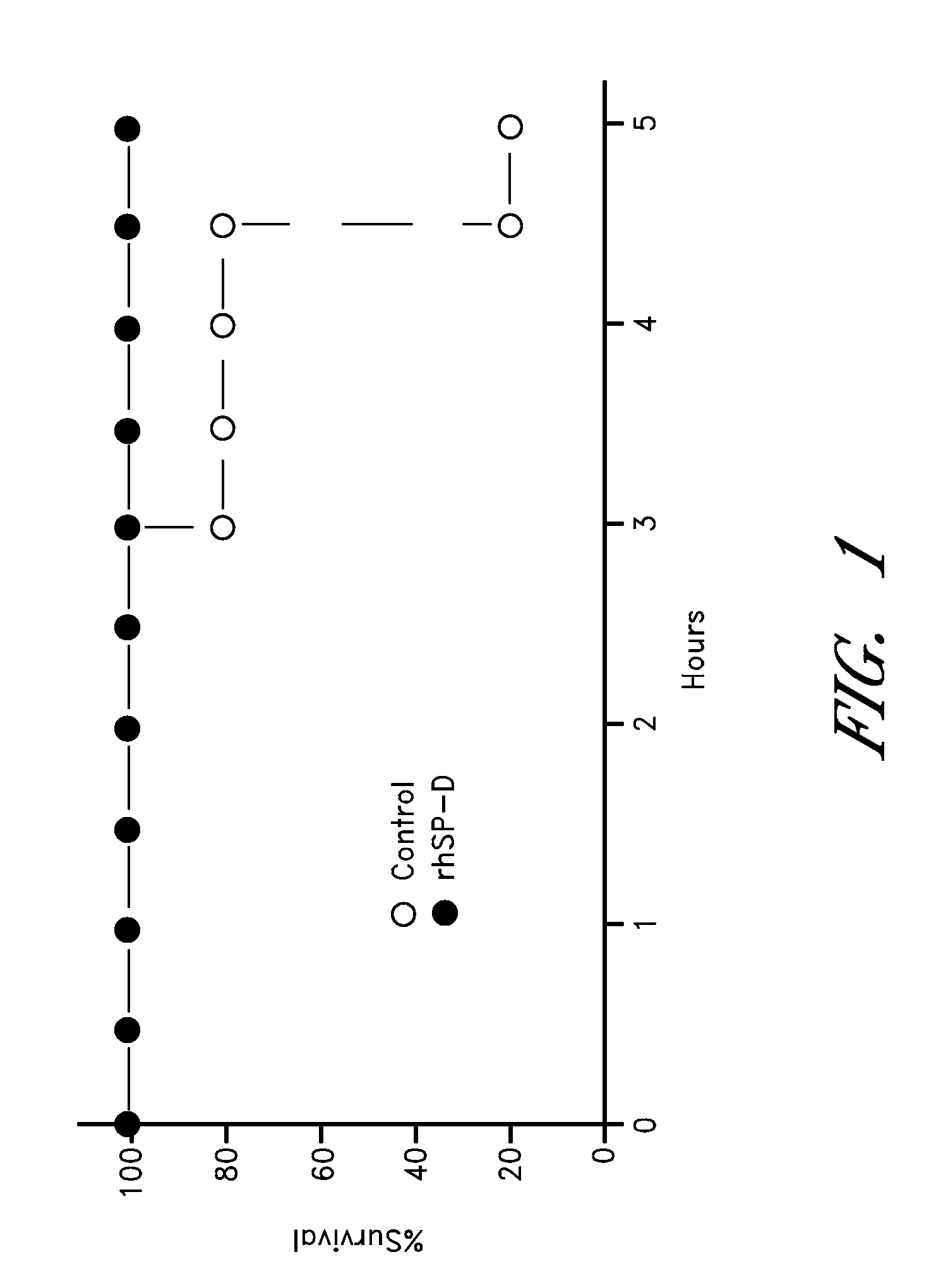Surfactant protein-d for prevention and treatment of lung infections and sepsis
a technology of surfactant protein and sepsis, which is applied in the field of biological active proteins, can solve the problems of sepsis being a serious, life-threatening, and infants are particularly susceptible to sepsis, and achieve the effects of decreasing endotoxin levels in blood plasma, reducing lipopolysaccharide leakage, and reducing sepsis
- Summary
- Abstract
- Description
- Claims
- Application Information
AI Technical Summary
Benefits of technology
Problems solved by technology
Method used
Image
Examples
example 1
Preparation and Purification of Recombinant SP-D
[0115]rhSP-D was synthesized by transfection of CHO DHFR cells with a cDNA encoding full-length human SP-D. Transfected cells were selected with increasing concentrations of methotrexate. Transfected pools were cloned by limiting dilution and high expressing clones were identified using an ELISA designed specifically for this purpose. An SP-D clone was grown in roller bottles in medium containing serum and then switched to JRH EX-CELL 302 medium for bioproduction. The choice of the serum-free medium was found to be key in achieving high production levels of rhSP-D. To avoid high shear rates associated with large-scale buffer exchange methods, the protein was captured from conditioned medium using anion ion exchange chromatography to concentrate the sample and remove glucose. Specifically, the medium was diluted, pH adjusted to 7.4, and then loaded on a Q ceramic hyperD F resin (Ciphergen, Fremont, Calif.). Following extensive washing t...
example 2
Purification of Endogenous SP-D
[0116]Endogenous SP-D is purified from bronchoalveolar lavage fluid as previously described (Kingma, P. S. et al., (2006) J Biol Chem 281:24496-24505; Strong, P. et al., (1998) J Immunol Methods 220:139-149, each of which is incorporated herein by reference in its entirety). Lavage fluid is cleared of lipid by centrifugation. The lipid-free supernatant is applied to a 20 ml maltosyl-Sepharose column in 20 mM Tris-HCl (pH 7.4), 5 mM CaCl2. The column is washed with a solution of 20 mM Tris-HCl (pH 7.4), 5 mM CaCl2, and 1 M NaCl, followed by a selective elution of SP-D with manganese chloride. The pooled fractions are diluted 10-fold in a solution of 20 mM Tris-HCl (pH 7.4) and 30 mM CaCl2 and applied to a 1 ml bed volume maltosyl-Sepharose column. The column is stripped of LPS with a solution of 20 mM Tris-HCl (pH 7.4), 20 mM n-octyl-d-glucopyranoside, 200 mM NaCl, 2 mM CaCl2 and 100 μg / ml polymyxin and washed with a solution of 20 mM Tris-HCl (pH 7.4),...
example 3
Preparation of Premature Lambs for Treatment
[0117]All animals were delivered by Cesarean section at 130 d gestation age from Suffolk ewes bred to Dorset rams (term 150 d GA) as previously described (Kramer et al., (2002) Am J Respir Crit Care Med, 165:463-469; Kramer et al., (2001) Am J Respir Crit Care Med, 163:158-165, each of which is incorporated herein by reference in its entirety). After exposure of the fetal head and neck, an endotracheal tube was tied into the trachea. The fetal lung fluid that could be easily aspirated by syringe was recovered and the lambs were delivered and weighed.
PUM
| Property | Measurement | Unit |
|---|---|---|
| birth weight | aaaaa | aaaaa |
| body weight | aaaaa | aaaaa |
| body weight | aaaaa | aaaaa |
Abstract
Description
Claims
Application Information
 Login to View More
Login to View More - R&D
- Intellectual Property
- Life Sciences
- Materials
- Tech Scout
- Unparalleled Data Quality
- Higher Quality Content
- 60% Fewer Hallucinations
Browse by: Latest US Patents, China's latest patents, Technical Efficacy Thesaurus, Application Domain, Technology Topic, Popular Technical Reports.
© 2025 PatSnap. All rights reserved.Legal|Privacy policy|Modern Slavery Act Transparency Statement|Sitemap|About US| Contact US: help@patsnap.com



